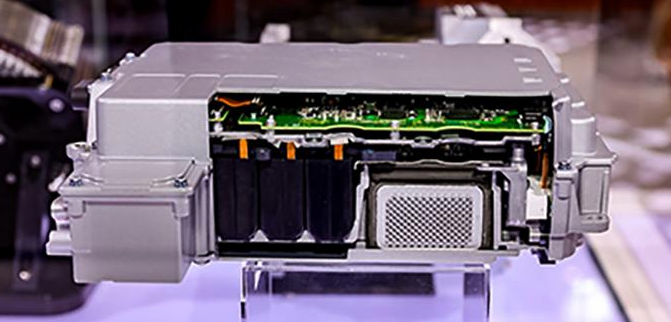The motor controller, as a core electronic module in new energy vehicles, serves as the bridge between the motor and the battery pack, primarily responsible for energy transmission and conversion. Its functionality relies on the coordinated operation of a series of key components.

In its automated assembly process, key components such as PCBA circuit boards and IGBT modules are fixed with bolts and have high assembly process requirements. It is essential to avoid issues such as dirty screws, loose screws, and misaligned screws, as these can affect assembly quality and potentially pose safety hazards to the entire vehicle.
1. PCBA Circuit Board Tightening
Assembly Requirements: The circuit board, as a key electronic component in the motor controller, requires a high level of surface cleanliness during assembly. If impurities mix into the screws, they can easily cause short circuits or open circuits, affecting the normal operation of the circuit. Therefore, dust-proof treatment is crucial. Additionally, it is necessary to monitor the tightening quality of the bolts in real-time to avoid defects such as floating high and stripped threads.
Solution: For the commonly used M2 to M4 small screws in circuit boards, a stepwise screw feeder is used in the automatic screw feeding process. This feeder has a low screw jamming rate and stable feeding. During the process from pushing to feeding, various cleaning components ensure the cleanliness of the screws. Additionally, a 0.8L capacity screw feeder can be selected based on the screw size. The compact design allows it to be placed directly on the workbench, flexibly adapting to workstation layouts.
During tightening, due to the inconsistency of the screw products, it is not possible to identify floating screws that reach the contact point but have insufficient clamping force. Sensor-based tightening tools can automatically identify the contact point during tightening, accurately detect floating screw issues, and monitor torque and angle to detect tightening abnormalities.
Moreover, some circuit board assemblies involve manual assembly, requiring workers to manually pick up and tighten screws. However, during the assembly process, issues such as dropped screws, missed tightening, or repeated tightening can occur, affecting product quality.
Solution: For the manual screw handling process, a drum screw feeder is used for quantitative feeding, controlling the number of screws, and can be paired with barcode scanning or length detection and sorting functions to avoid mixing screws, improving tightening quality and reducing rework. For the manual tightening process, an assembly guidance system can be used. Through a graphical user interface, it guides workers through standardized execution processes. Combined with a positioning lever, it controls the tightening sequence of screws, avoiding incorrect or missed tightening, and further enhancing quality control.
2. IGBT Module Tightening
Assembly Requirements: To achieve better heat dissipation during operation, a layer of thermal grease is applied between the IGBT module and the heat sink, and the module is uniformly tightened with bolts.
Solution: A typical IGBT module includes four tightening points that need to be uniformly tightened. Compared to a four-axis synchronous tightening solution, adopting a re-tightening strategy can save equipment costs. Only one intelligent tightening tool is needed. Through Pset torque program settings and re-tightening task configurations, the bolts are first tightened to one-third of the target torque in a diagonal sequence, and then re-tightened to the target torque in the same diagonal sequence, ensuring consistent static torque at each point.









